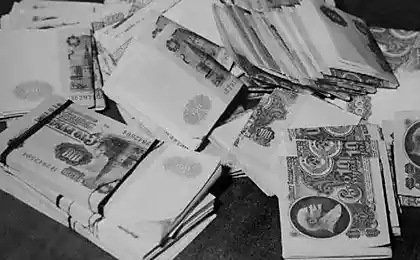452
Iron "Felix"
In the process of restoring order in the attic I found something very interesting. "Something" has been pushed back in the farthest corner, covered with a black cap, and for its size it was pretty heavy.
Naturally, I immediately realized that this is an artifact of the Soviet era, but what is it? It turned out - it's adding machine "Felix"! I did not immediately realize, but my neighbor, Proletarian 50 years, once identified - "Yes this is Felix! We have to consider these. " Well, for me, an adding machine - is primarily the very first lessons of science, because it is a study of the history of computers, adding machines and, in particular, started this thing. By the way, in our school to study nothing but this still could not, because when I was, we did not have a single computer. But enough of the bad news.
The name of the unit was given a very apt, because Felix us what? Iron. And the creation of this unit certainly did not regret iron.
4 Photo © nikerbriker via 76_82

Disassemble it was a little scary.
Unfortunately, the device was faulty. Stuck rings. However, I found the literature in which the device is described in detail by Felix, and even how it works. So I ventured to dismantle it, but have not yet been repaired.

The main problem was to disassemble the shaft. To do this, it was necessary to remove the nut from the right.

Notice the cracked rings. I do not know why they have such a low-quality Whether metal (what course to blame Stalin), or the device is simply dropped.
P.S. Background from a site on the topic: Adding machine "Felix" is a typical odhner arithmometer simplest design. Produced from 1929 to 1978, similar models produced from 1870 to 1970-ies. Weight: 3, 5 (from the passport) -6 kg. Rotation speed: 120-140 revolutions / min (from the passport) of other sources - 250 rev / min. Operational Performance: when multiplied by 5-digit numbers to 4-digit: 115 operations per hour by dividing the 5-digit numbers to 4-digit: 85 operations per hour. If the calculation result - a negative number, an adding machine makes the call.

Source:
Naturally, I immediately realized that this is an artifact of the Soviet era, but what is it? It turned out - it's adding machine "Felix"! I did not immediately realize, but my neighbor, Proletarian 50 years, once identified - "Yes this is Felix! We have to consider these. " Well, for me, an adding machine - is primarily the very first lessons of science, because it is a study of the history of computers, adding machines and, in particular, started this thing. By the way, in our school to study nothing but this still could not, because when I was, we did not have a single computer. But enough of the bad news.
The name of the unit was given a very apt, because Felix us what? Iron. And the creation of this unit certainly did not regret iron.
4 Photo © nikerbriker via 76_82

Disassemble it was a little scary.
Unfortunately, the device was faulty. Stuck rings. However, I found the literature in which the device is described in detail by Felix, and even how it works. So I ventured to dismantle it, but have not yet been repaired.

The main problem was to disassemble the shaft. To do this, it was necessary to remove the nut from the right.

Notice the cracked rings. I do not know why they have such a low-quality Whether metal (what course to blame Stalin), or the device is simply dropped.
P.S. Background from a site on the topic: Adding machine "Felix" is a typical odhner arithmometer simplest design. Produced from 1929 to 1978, similar models produced from 1870 to 1970-ies. Weight: 3, 5 (from the passport) -6 kg. Rotation speed: 120-140 revolutions / min (from the passport) of other sources - 250 rev / min. Operational Performance: when multiplied by 5-digit numbers to 4-digit: 115 operations per hour by dividing the 5-digit numbers to 4-digit: 85 operations per hour. If the calculation result - a negative number, an adding machine makes the call.

Source:























